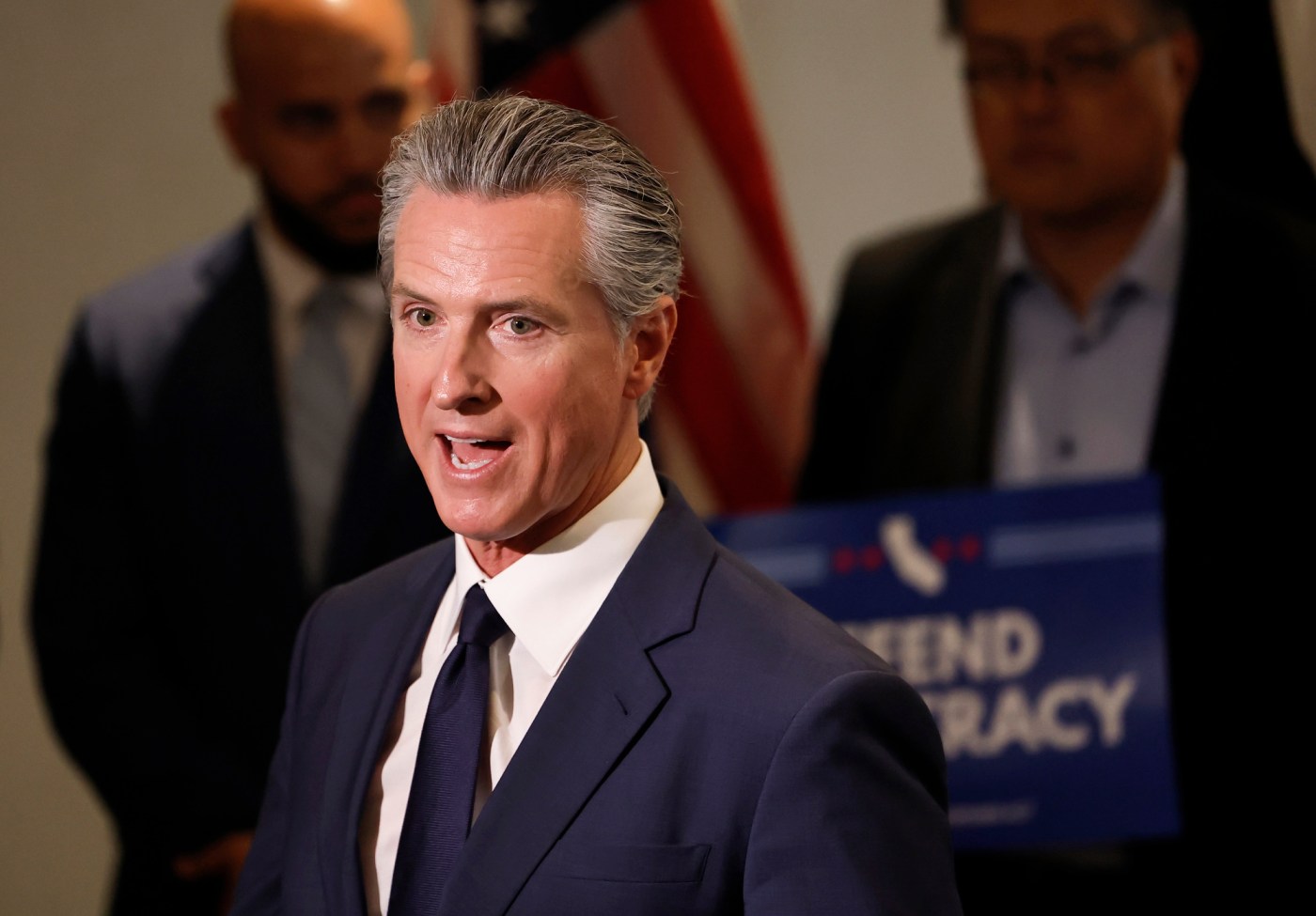
Gov. Gavin Newsom and his fellow Democrats in the Legislature are steering California onto a unique political course with an unpredictable outcome.
By gerrymandering the state’s 52 congressional districts to produce at least five more Democratic members, they claim to be protecting democracy from President Donald Trump’s power grab. Trump is pressing Texas and other red states to rearrange their congressional districts to protect the paper-thin Republican congressional majority in next year’s elections.
Related Articles
Letters: Bill for housing near transit further threatens neighborhoods
Will life insurance pay? Does God approve? Burning questions about Medical Aid in Dying
California Legislature fast-tracks Gov. Newsom’s redistricting proposal
California leaders pledge to reduce chronic absenteeism in half
California Republicans say redistricting legislation needs more review time, ask state Supreme Court to intervene
“Wake up, America,” Newsom said Thursday at a Los Angeles rally launching the campaign for the redistricting effort. “Wake up to what Donald Trump is doing. Wake up to his assault. Wake up to the assault on institutions and knowledge and history. Wake up to his war on science, public health, his war against the American people.”.
Newsom’s three-bill package is almost certain to pass this week, placing the gerrymander on a Nov. 4 special election ballot. If approved by voters, the new maps would be in place for three election cycles but the state’s independent redistricting commission would redraw them again after the 2030 census — or at least Newsom promises it would.
Since no one can predict how all of this will turn out, the situation invites exploring potential scenarios.
For example, Newsom says California’s gerrymander would occur only if Texas does it first, but that’s not what Assembly Constitutional Amendment 8 actually says. The proposal would become operative, ACA 8 says, “only if Texas, Florida, or another state adopts a new congressional district map that takes effect after August 1, 2025, and before January 1, 2031, and such redistricting is not required by a federal court order.”
In other words, if the Texas or another red-state gerrymander does not occur for whatever reason, California’s could still be activated if any other state, including another blue state such as Illinois, also rearranges its districts. It’s a loophole big enough to drive a semi-truck through.
Let’s assume that the gerrymander is activated for the 2026, 2028 and 2030 election cycles, and gives Democrats at least 48 of the state’s 52 congressional seats. Would Democrats actually be willing to shift redistricting back to the independent commission after the 2030 census?
Due to relatively stagnant population growth, California is destined to lose as many as four seats after the census. Democrats who win gerrymandered districts in 2026 would be reluctant to give them up. There could be immense pressure to protect them by returning to redistricting via the Legislature, the system in place for many decades prior to creation of the commission process in 2008.
Were the House as closely divided in 2030 as it is now, Democrats also would have every reason to offset the shrinkage of California’s congressional delegation by once again minimizing Republican seats.
The precedent for such a bait-and-switch maneuver is what happened after voters agreed to raise state taxes 2012. Although the ballot measure said the new taxes would be temporary, another union-sponsored ballot measure four years later kept the higher income taxes in effect for an additional 12 years until 2030 and the same interests are planning to seek another extension.
Finally, although it appears certain that the package, which also includes Assembly Bill 604 to detail the new districts and Senate Bill 280 to call the special election, will gain legislative approval this week, voter endorsement is decidedly uncertain. Polling shows lukewarm support at best and Republicans will mount a well-financed drive for rejection, given that House control may be at stake.
Rejection would be a black eye for Newsom, who obviously sees the maneuver as improving his national political standing and probably his chances of becoming the Democratic candidate for president in 2028.
Dan Walters is a CalMatters columnist.